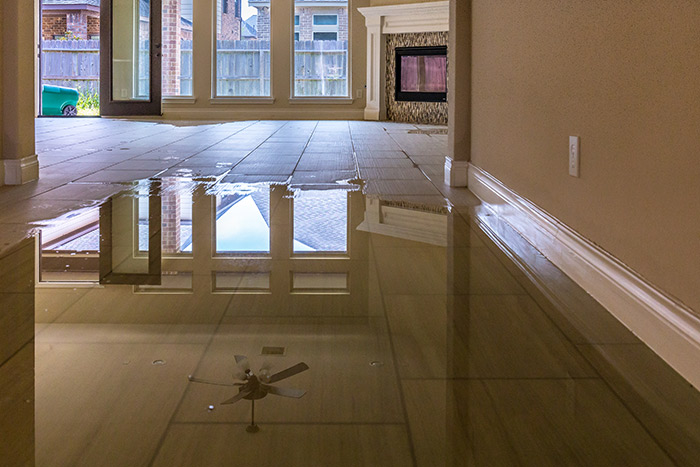
Anyone who's been through a flood knows that recovering after this kind of disaster isn't easy. You're forced to accept that irreplaceable family treasures and memories may be gone forever, your furniture is destroyed, potentially along with your home. It's a devastating and emotional moment and a lot to take in all at once. But you know the only thing you can do is move forward, and begin the steps needed to restore your home.
As soon as the floodwaters recede, you can return to your home as long as officials give the OK to do so. Before entering your home, however, make sure it is safe!
Tips for staying safe upon return:
- Check for structural damage and use extreme caution. One way to do this is to check if the walls are vertical and straight.
- Turn off the electricity in your home at the main breaker or fuse box. Make sure you stand in a dry spot to do this! If you can't stand in a dry spot, call an electrician who will take care of the risk.
- Two people in rain boots standing on a wet floor
- Turn off the gas. If you smell something unusual, leave immediately and call your gas company from another location.
- Check your sewage system. Repair damaged septic tanks, cesspools, pits and leaching systems as soon as possible. These serious health hazards.
- Take precaution when inspecting your home. Your home may have sagging ceilings and areas that are still flooded. Also beware of critters like snakes, spiders and rodents that may have taken refuge in your home!
- Bring waterproof boots, a first aid kit, cleaning supplies and a battery-powered flashlight with you before entering the house! You never know what you'll run into.
Tips for claim reporting:
Another important step to take when recovering from a flood is reporting your loss immediately to your insurance agent or carrier. While flood coverage is typically not provided under most homeowners and renters policies, flood insurance may be available to you through the federally regulated program known as the National Flood Insurance Program (NFIP). If you need assistance to locate your flood insurance carrier, you can call 1-800-621-FEMA (3362). A claims adjuster should contact you within a day or two after report of the claim, depending on the severity of the flood event.
When reporting a claim, you should have the following information available:
- Your name and address
- Policy number
- Date the loss happened
- Description of events that led to loss
- Active phone number
- Confirm what's covered under your NFIP policy (some policyholders may only have building or personal property items coverage, not both)
Tips for inspections:
The next step, according to the Federal Emergency Management Agency (FEMA), is to prepare for your inspection. After deeming the structure safe for entry, take as many photos or videos of the flood-damaged property on the outside and inside. Take pictures of high-cost items as well like washers and dryers, hot water heaters, televisions and kitchen appliances. It's also a good idea to separate the damaged from undamaged items prior to the inspection.
When the adjuster arrives, they will inspect your property including taking measurements and photos and give you an overview of the NFIP flood claims process. Remember that some flood insurance claims are more complex than others. Some may be opened and closed quickly, while others may take weeks or even months to resolve.
If your vehicle was also damaged in a flood event, it's best to call your auto insurance provider to see if you're covered for the loss.
If you are a Lallis & Higgins insurance customer and need to file a claim on your home or auto, contact us.

